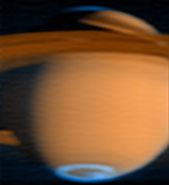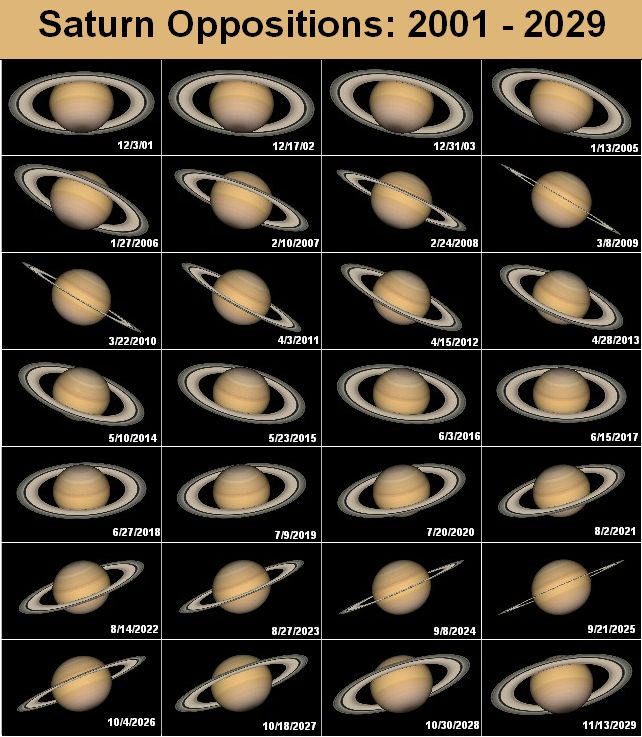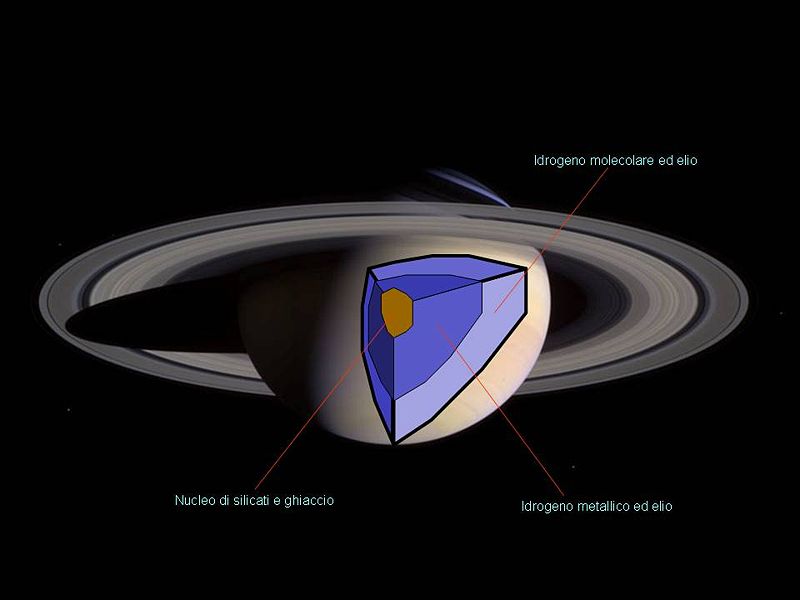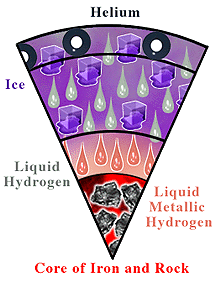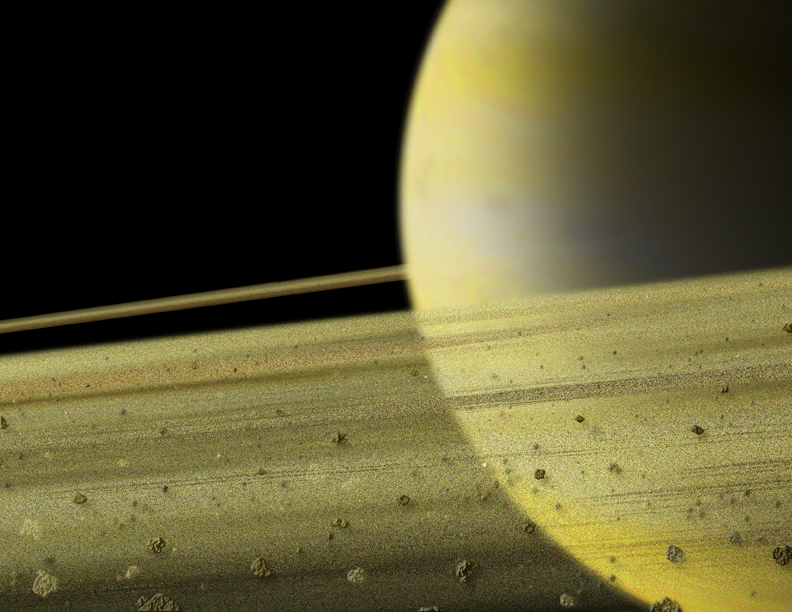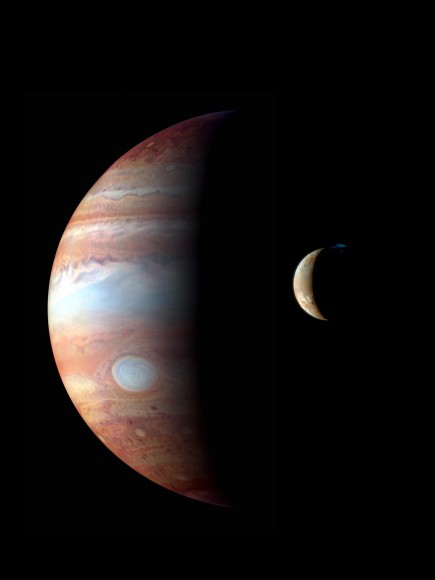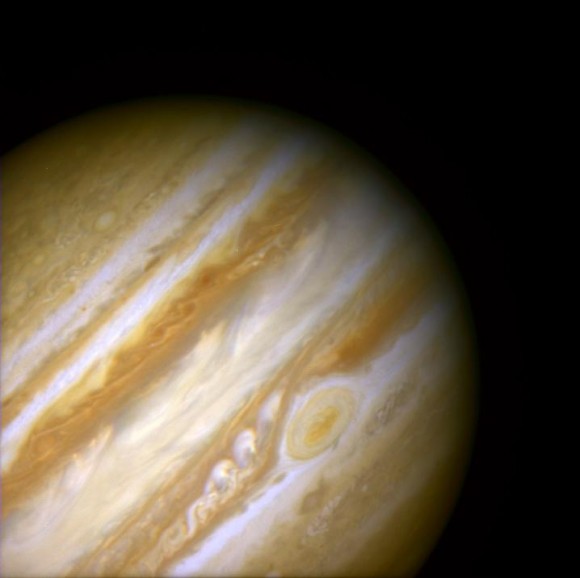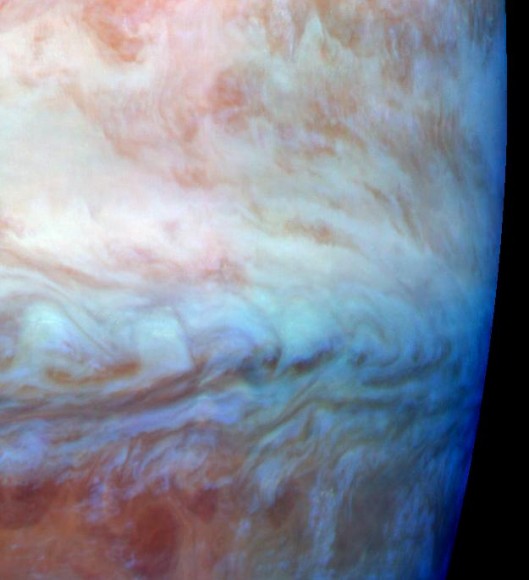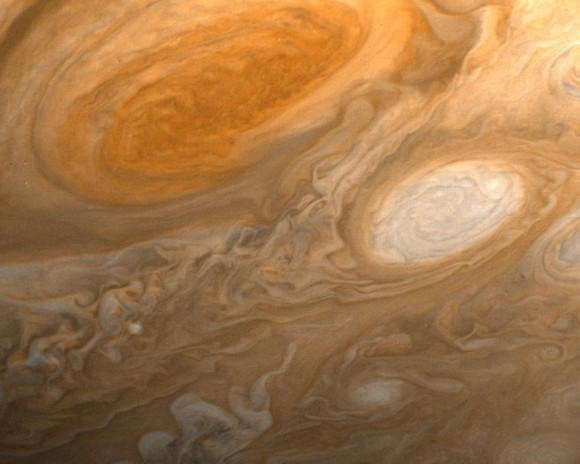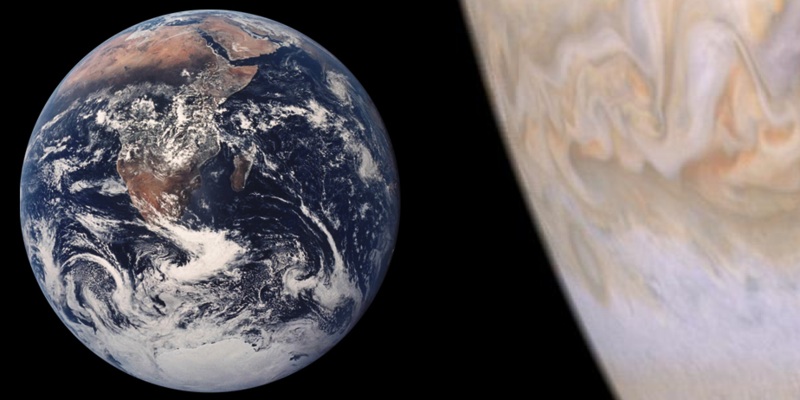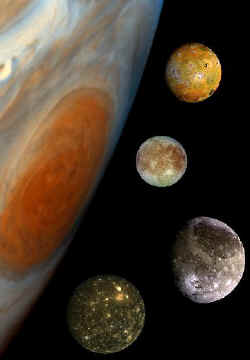[/caption]
The answer to ”how far is Saturn from Earth” has a different answer every day. As the planets move along their orbital paths they move nearer and further in comparison to each other. For the sake of simplicity, Saturn is 1.2 billion km, roughly 7 AU, from the Earth when the two are at their closest approach to one another. They are 1.67 billion km, around 11 AU, from each other when they are at their most distant. Saturn and Earth are the closest to each other when they are on the same side of the Sun and at similar points in their orbits. The are the most distant when on opposite sides of the Sun.
Here are some of the other orbital and physical characteristics of Saturn compared to those of Earth.
Equatorial Diameter… 120,536 km, 9.44 times that of Earth
Polar Diameter… 108,728 km, 8.55 times that of Earth
Surface Area…4.27×1010 km2, 83.7 times that of Earth
Volume…8.2713×1014 km3, 763.6 times that of Earth
Mass…5.6846×1026 kg, 95.2 times that of Earth
Density… 0.687 g/cm3, one tenth that of Earth…Saturn could float in water.
Here are a few other interesting facts about Saturn that may interest you:
Saturn has 60 moons. That means that about 40% of the moons in our Solar System orbit around the planet. Many of these moons are very small and can not be seen from Earth. The last four were discovered by the Cassini spacecraft and scientist fully expect to find more as more spacecraft make their way toward Saturn.
Saturn is known for its amazing set of rings, but did you know that the occasionally disappear? Well, they disappear from our point of view anyway. The planet is tilted on its axis very similar to Earth. AS it makes its way along its 30 Earth year orbit of the Sun we sometimes see the rings full on and other time they are edge on from our perspective and disappear. This will next happen in 2024-2025.
While Saturn is too hostile for any form of life that we know, its moon Enceladus has ice geysers. That means that some mechanism is keeping the moon warm enough for liquid water to exist. As you know, here on Earth where ever there is liquid water there is life. Some scientist think that there is a chance for some type of life to exist on Enceladus.
Now that you know the answer to ”how far is Saturn from Earth”, we here at Universe Today hope that you will be inspired to find out more about the ringed planet.
Here’s an article that has photos of Earth seen from other worlds, including Saturn, and an article about how far each of the planets are from the Sun.
Here’s Hubblesite’s News Releases about Saturn, and more facts on Saturn from Kid Cosmos.
We have recorded two episodes of Astronomy Cast just about Saturn. The first is Episode 59: Saturn, and the second is Episode 61: Saturn’s Moons.
Source: NASA


